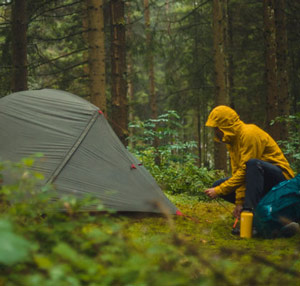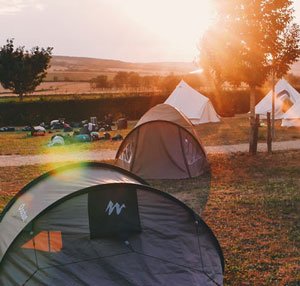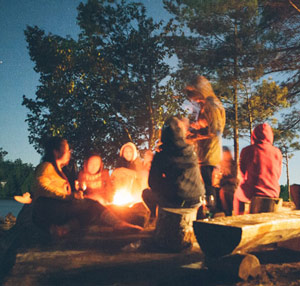How To Camp Sustainably: Guide To Eco Camping
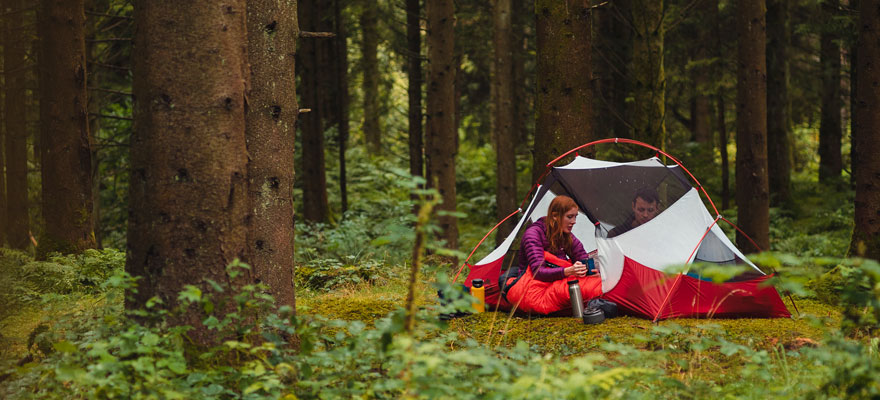
Camping is one of the best ways to immerse yourself in nature and embrace your surroundings. It's therefore especially important to consider the impact that your trip may be having on the environment.
Fortunately, by taking some time to consider and plan your trip, alongside investing in some sustainable and eco camping equipment, you can quickly minimise the environmental impact of your camping. You'll find some of our top tips and favourite pieces of gear to help you camp sustainably below.
How To Plan An Eco Camping Trip
Camping more sustainably begins with planning, taking into consideration the ways that your trip may impact the environment, and how you can help to minimise this.
Travel
Take time to look through potential destinations and don’t rule out any that are close to home. Staying local is a great way to cut down any emissions caused by travelling and by camping near to your home, you can explore your local area in a way you may not have before.
Consider your travel method before heading on your trip. Is it possible to take public transport? Can you cycle to your destination? If you end up driving in your car, then ensure you lift share with any others heading on the trip and maximise your car space.
Bike packing is a great way to really cut down your carbon impact. Not only is this good for you and the environment but you get to explore throughout the journey, and have the convenience of being able to use your bike once at your destination.
Sustainable Camp Sites
As the importance of sustainability has become more prominent, more and more campsites are ensuring they do all they can to reduce their impact on the environment.
A great starting place is The Greener Camping Club which showcases campsites that focus on sustainability and an eco-friendly stay. You can expect spacious and uncrowded sites set in natural landscapes. Often these campsites will offer sustainable facilities alongside managing their land to ensure environmental growth and wildlife diversity.
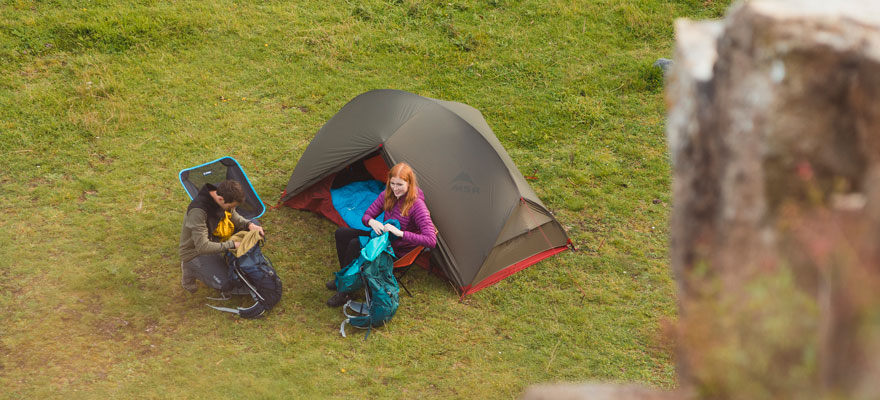
Wild Camping
If done sensibly and carefully, then wild camping can be a great way to reduce your environmental impact. You can truly immerse yourself in nature and live off-the-grid. There are however a number of rules to follow and careful consideration must be taken to ensure that you are permitted to camp in the area you choose, and do not impact the local environment and nature. Leave no trace is key, and an idea that we will explore further below.
Our beginners guide to Wild Camping is a great place to find out more.
Leave no Trace
Leave no trace is a fundamental concept for any camping trip, and is especially important for wild campers. The key is to ensure that you leave the area looking exactly as it did before you arrived. The main steps to follow are:
- Camp on durable surfaces – avoid pitching in areas where your set up may dig in and damage the ground.
- Take all waste and litter away with you, and dispose of it properly.
- Leave what you find – leave rocks, plants and other objects of interest as you found them.
- Respect wildlife and nature – avoid disturbing any wildlife and plants.
- Be considerate of others.
Eco Camping Equipment
Choosing eco-friendly and sustainable camping equipment is crucial to making your trip as environmentally friendly as possible. It’s also important to invest in good quality gear that will last for a long time. Fortunately, we have a great range of eco-friendly camping equipment available. Below we’ve put together some of our favourites
Vango Earth Collection

The Vango Earth Collection primarily features tents alongside sleeping bags and the Osiris Chair. Vango has created the Earth Collection from 100% recycled fabrics - a fantastic initiative for anyone looking to reduce the environmental impact of their camping trip.
The Sentinel Eco Fabric retains the performance and quality that you would expect from Vango, but is made from recycled single-use plastics. The Joro Air and Osiris Air tents are great options for family camping trips, with the Osiris chair and Evolve Superwarm sleeping bags forming the perfect eco camping collection.
Big Agnes Fly Creek HV UL2 and Tiger Wall UL2
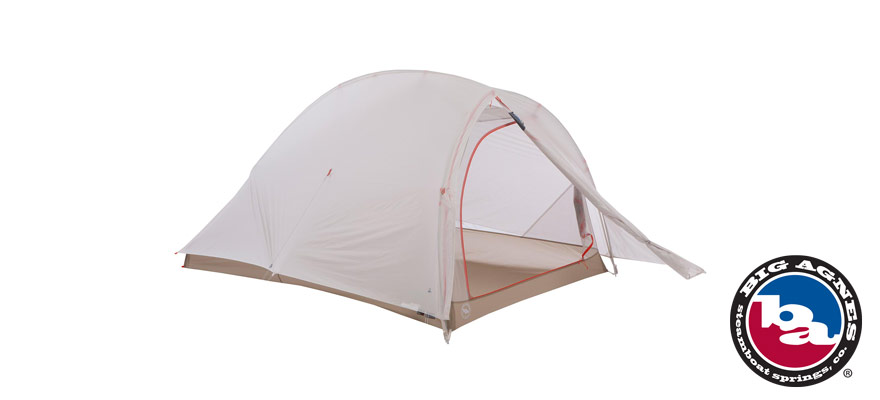
The Big Agnes Fly Creek HV UL2 and Tiger Wall UL2 are fantastic ultralight two-person tents, perfect for backpacking. New for 2021, both models use solution-dyed fabric, which offers a number of environmental benefits. Compared to standard, solution-dyed fabrics use 50% less water in production, there is an 80% reduction in the energy required during manufacturing, and 80% fewer chemicals are used. Not only are these fabrics more environmentally friendly, but they are also better quality as solution-dyed fabrics are highly resistant to UV fade.
Both models also use DAC tent poles which use a Green Anodizing process. This is a more environmentally friendly way to process and enhance aluminium - importantly it significantly reduces wastewater produced during manufacturing by recycling water throughout the process. All seams are taped with waterproof, solvent-free, polyurethane tape meaning that there is no use of any PVC or VOC.
Marmot Trestles Elite Eco Sleeping Bags
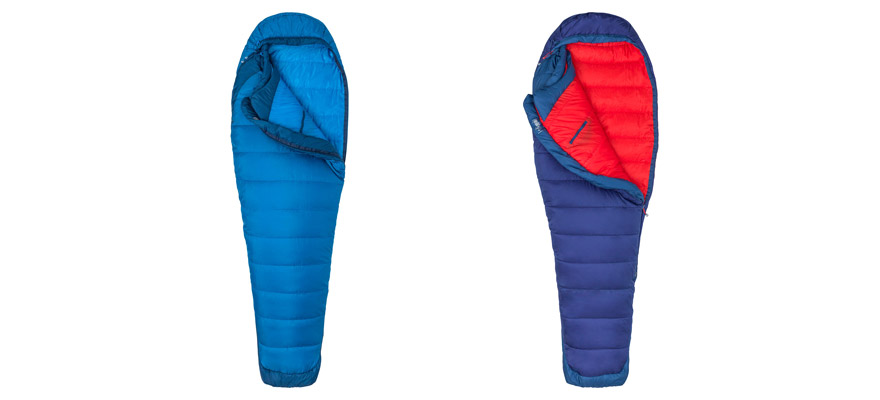
The Marmot Trestles Elite Eco's are a fantastic option for eco-friendly sleeping bags. They offer the same performance and cosiness as a standard bag but use sustainable and recycled materials throughout. This includes PFC-free DWR on the recycled shell. The lining and fill are also made from recycled materials with the HL-Elixr Eco Micro synthetic insulation offering excellent warmth.
Helinox Chairs
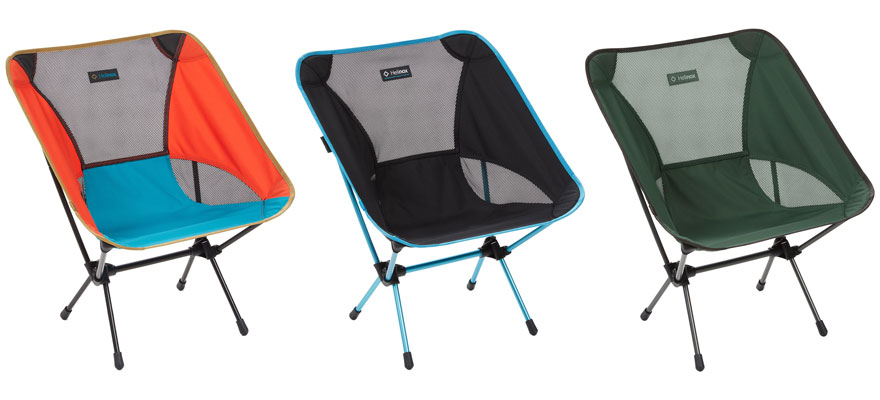
Helinox chairs are often viewed as some of the best backcountry/camping chairs on the market. They are super lightweight, strong and comfortable. For 2021, Helinox has continued to utilise sustainable practices. Across all of their models, they use DAC's Green Anodised poles which as previously mentioned, is the most environmentally friendly way of processing aluminium poles.
About the Author:Huw Saunders - Outdoor ExpertGrowing up in rural Wales, Huw has been immersed in the outdoors for as long as he can remember. If not surfing the Welsh coast, he can now usually be found either running or hiking in the Peak District and through the winter, tries to get out to Europe to ski as much as possible. |

